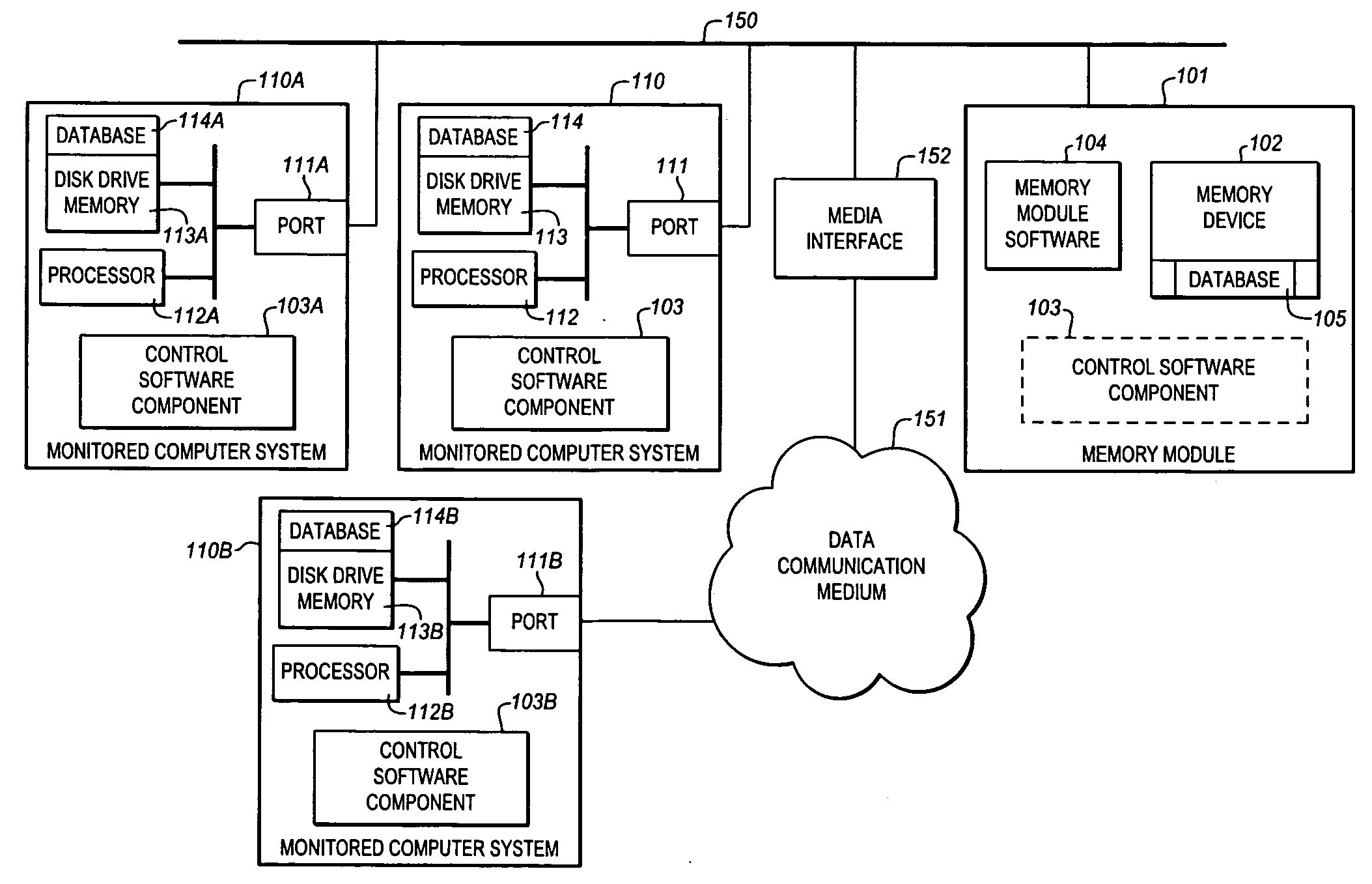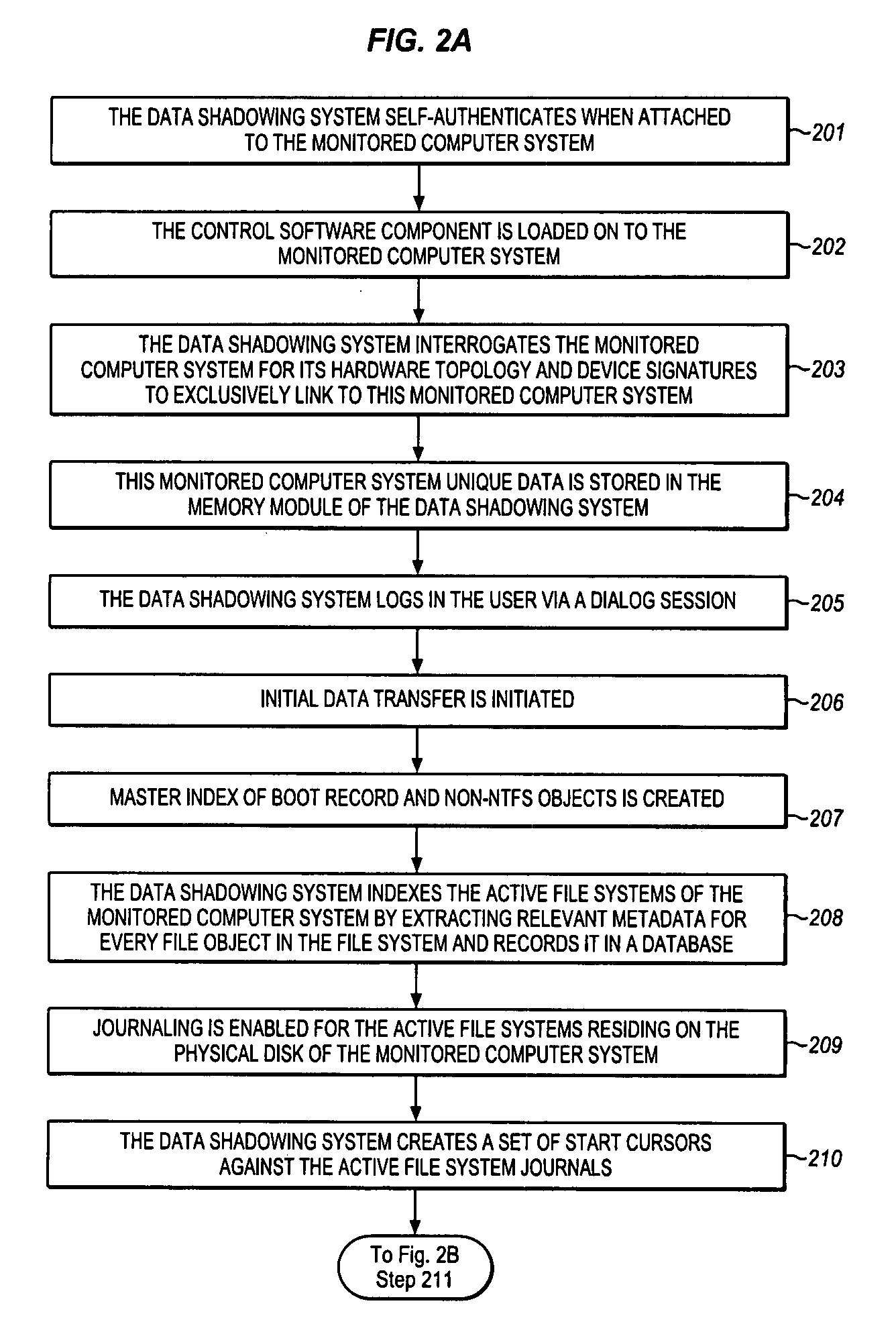System for automatically shadowing data and file directory structures for a plurality of network-connected computers using a network-attached memory
- Summary
- Abstract
- Description
- Claims
- Application Information
AI Technical Summary
Benefits of technology
Problems solved by technology
Method used
Image
Examples
Embodiment Construction
[0027]The following terms as used herein have the following meanings.
[0028]“File system”—the system utilized by the computer operating system to organize, store, and access information contained in the computer system memory.
[0029]“File navigation system”—the textual, hierarchical navigation interface used by the computer operating system to provide a user with an organized manner of storing, identifying, locating, and operating on files for user operations contained in the computer system memory.
[0030]“Change journal”—a computer operating system provided system to identify and track any file changes, creations, deletions, or relocations.
[0031]“Meta file”—an indirect means of storing information about a related file (e.g., file size and creation date for a data file).
[0032]“Page file”—a computer operating system defined and created file which is specific to the present session running on the computer system; the page file represents short-lived data that is not valid or meaningful t...
PUM
 Login to View More
Login to View More Abstract
Description
Claims
Application Information
 Login to View More
Login to View More - R&D
- Intellectual Property
- Life Sciences
- Materials
- Tech Scout
- Unparalleled Data Quality
- Higher Quality Content
- 60% Fewer Hallucinations
Browse by: Latest US Patents, China's latest patents, Technical Efficacy Thesaurus, Application Domain, Technology Topic, Popular Technical Reports.
© 2025 PatSnap. All rights reserved.Legal|Privacy policy|Modern Slavery Act Transparency Statement|Sitemap|About US| Contact US: help@patsnap.com



